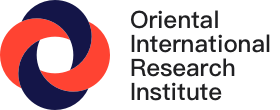The Relentless Rise of PIK Hints at Trouble to Come for Private Markets
(Bloomberg) -- A three letter acronym is increasingly cropping up in corporate filings and it’s fueling concern among ratings companies and fund managers.
Mentions of PIK in company filings, presentations and transcripts have doubled since the start of the pandemic, according to data compiled by Bloomberg. Short for ‘payment in kind,’ the term refers to debt that allows companies the option of deferring interest payments.
PIK obligations often amount to hidden leverage for companies, as delayed interest gets tacked on to principal due. The debt has proven particularly attractive to private equity firms, who have been hit by lower valuations and higher borrowing costs after largely failing to hedge against the risk of rising interest rates.
While deferring interest payments for a couple of quarters can help sidestep short-term cash squeezes, extended delays of payments makes it harder to refinance debt piles. That, in turn, is worrying regulators, who fret about the ways in which private credit funds, which can be providers of PIK debt, could impact the financial system.
“Lenders have a number of ways they can mask liquidity challenges with their underlying borrowers,” said Ted McNulty, chief investment officer at MidCap Financial Investment Corp., a middle-market lender managed by an affiliate of Apollo Global Management Inc., on a call with analysts earlier this month. “Whether at origination or as part of the restructuring, PIK income is a proxy for borrowers who cannot currently service their debt.”
PIK makes up 6.7% of income among private credit funds at present, up from 5.4% a year ago, according to Ana Arsov, global head of private credit at Moody’s Ratings, who added that it’s not a sustainable strategy because it creates a permanently heavy debt structure.
PIK is a “a way of buying time for distressed credits as they await rate cuts,” she said, adding it “masquerades fund performance for investors.”
Others say that it’s important to look deeper and see what the plan is for the borrowings.
“You have to differentiate between PIK that is intentional at the outset versus maybe PIK that is used to reduce default,” Michael Arougheti, chief executive at Ares Management Corp., said in a recent earnings call. “If you are thinking about prudently structuring your leverage” and don’t want to constrain a company’s “growth plan, then PIK is the way that you are going to capture excess return and support your borrowers.”
The number of documents mentioning PIK debt rose about 240% over the last five years among business development companies’ filings, presentations and transcripts. Prospect Capital Corp. stands out among them for using the term over 400 times in documents, almost four times as much as the second-ranked. One-third of the net investment income the Prospect fund generated in 2023 was paid in kind, double the industry average, according to Fitch Ratings.
Prospect Capital didn’t return a request for comment on Friday. But in a statement posted on its website last week, the firm said PIK “can be an efficient funding mechanism” when “companies are making accretive investments in their business with valuations substantially above Prospect’s cost basis.”
Week in Review
On the Move




